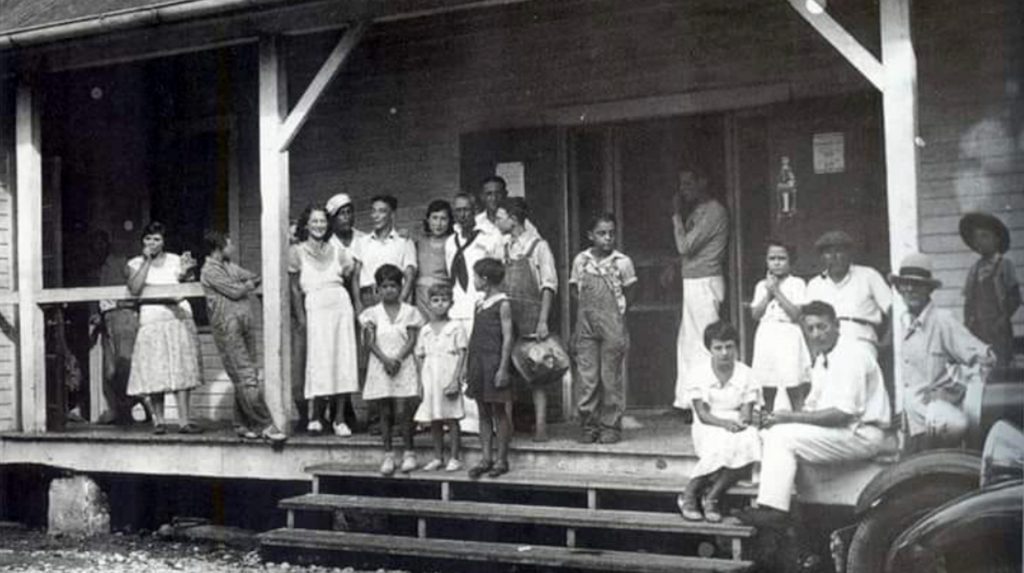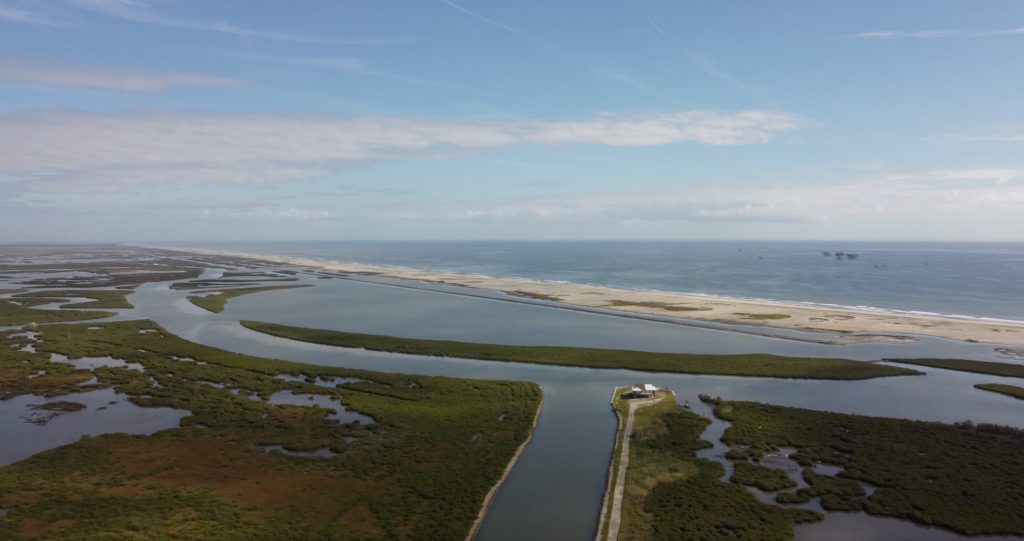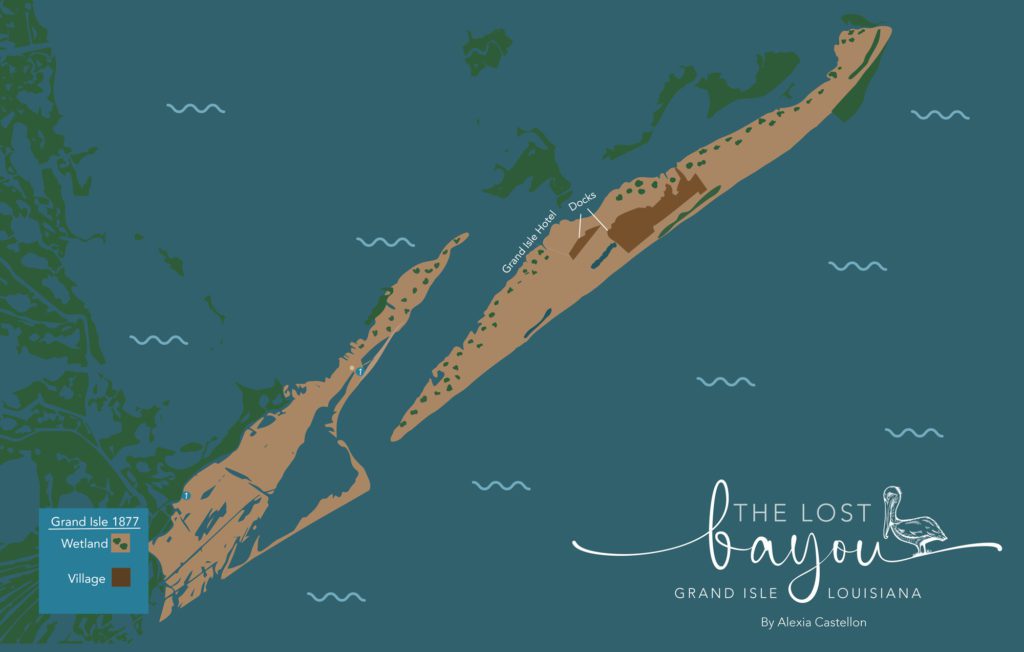Storm Stories

A podcast series about hurricane experiences on Grand Isle.
Family Memories

By Shannon Royal, video editor
An Inland Barrier

By Jonathan Eastwood , Features Editor Inland South Louisiana communities like New Orleans owe a lot to barrier islands like Grand Isle. “[If] Grand Isle goes, Bourbon Street’s gonna have eight feet of water,” Grand Isle Mayor David Camardelle says. “It’s coming.” “[If] Grand Isle goes, Bourbon Street’s gonna have eight feet of water. It’s coming.” — Mayor David Camardelle Grand Isle is one of many barrier islands that are made of sediment deposited by the Mississippi River. The islands’ position at the edge of the incoming tide prevents storm surges from devastating land further inland. But just as the waves build up barrier islands, they also tear them down. On August 29, 2021, Grand Isle was devastated by Hurricane Ida. But the direct hit to Grand Isle also helped keep storm surges from destroying inland Louisiana. Grand Isle resident Shane Holder tended to his RV park weekly until it was covered with several feet of sand. “All of this used to look like a golf course – I mean I mowed two or three times a week,” Holder says. “[Now] it’s deep under sand all the way across to that house.” The National Weather Service reported that the levee breach caused overflow up to 10-11 feet on the west end of the island and five to six feet on the east end. The surges removed some low-lying structures from their supports and stranded more than 200 residents in nearby Lafitte and Jean Lafitte. Barrier islands like Grand Isle serve as more than just protection against storms. They also form a separation between estuaries and open gulf waters. The mix of fresh water and salt water along with calmer conditions in the estuaries prove vital to many species and environmental functions. “The shrimp are dependent at certain times of coming up into the estuary with the grasses, with the calmer and slightly fresher conditions, and then later going out into the gulf,” Coastal Protection and Restoration Authority Darin Lee says. Barrier islands form not when a delta is building from a river’s deposit of sediment, but rather when sea water starts washing the sediment away from the coast. Because of man-made canals and levees sediment is no longer being deposited in the Grand Isle region, endangering the existence of Grand Isle and other nearby islands. “If left to their own devices at this point, the answer is ‘no – they will not come back’,” Lee says. “There will be no new delta formed and no ability for these barrier islands to rebuild.” Mayor Camardelle wants to place rocks in the water to protect the island from storm surges and to rebuild the coast. “You can see where it was built – where the rocks make the little V – the sand’s building up . . . I could put all the rest of the rocks for about 50 million dollars and I could break the surge – about 12 [to] 15 feet of water,” Camardelle says. Placing rocks is not as easy a solution as it seems, however – for multiple reasons. Rocks will simply manage the existing sediment on Grand Isle and prevent its loss, meaning sand will still need to be pumped to Grand Isle occasionally. Additionally, barrier islands form in chains as an interdependent system. Sediment from one island gets washed away and deposited at another island. Rocks would prevent another island from receiving the sediment it needs to exist. “If you put rocks at Grand Isle then it affects, maybe, Grande Terre,” Lee says. “It is not always going to solve your problems.” Grand Isle’s role as a barrier island leaves it to protect inland Louisiana by taking the impact of storm surges, regardless of Mayor Camardelle’s steps to lessen the impact of future storms Grand Isle will Disappear darin lee Coastal Protection and Restoration Authority
Grand Isle’s Changing Landscape

By Alexia Castellon , design editor Today 1983 1955 1932 1877 Today 1983 1955 1932 1877
The Lost Bayou: Grand Isle

By Jonathan Eastwood & Kristen Rodrigue, Features Editor & Managing Editor What was once one of Louisiana’s most popular island oases, Grand Isle now lies in shambles — homes destroyed, businesses in ruins and lives changed forever. “It was tragic – so shocking, I still have no words,” says long-time Grand Isle vacationer Gregory Autin. “It looked like a nuke went off, you couldn’t even see the road – it was just covered in sand.” “It was tragic – so shocking, I still have no words. It looked like a nuke went off.” On August 29, 2021, Hurricane Ida hit the Bayou Region of Southeastern Louisiana, causing mass destruction and leaving the low-lying island town of Grand Isle especially devastated. Nearly eight months later, Grand Isle is still struggling to recover. Many homes, businesses and camps remain in disrepair. Grand Isle resident and business owner Shane Holder says his RV park is still buried in sand after a levee was wiped out by waves during the storm. “You can’t tell it now, but from right here to over yonder there was no levee,” he says. “It completely failed.” While Mayor David Camardelle and members of the Town Council fight to bring back Grand Isle, the rest of the world – and even much of Louisiana – remains unaware of what the island continues to face. “They think normal life is happening here, and it’s not,” Camardelle says. Despite the hardship Hurricane Ida brought when it landed in the Bayou Region, Camardelle and the residents of Grand Isle are determined to keep fighting for their beloved island-paradise. A framed poster on the mayor’s desk in the temporary town hall reads, “As long as there is one grain of sand on Grand Isle, we are going to plant the American flag. We are not going anywhere.” In this issue, we will tell the story of Grand Isle: the community that has lost so much, and the people who are fighting to bring it back.
